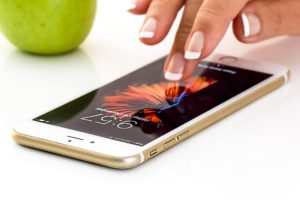 It is Friday night, you get dressed; you get your wallet or purse, your keys, and you dash out the door. Five seconds later as you are ready to get into your car, you realize there is an important object you are forgetting: your phone. This scenario plays out every single day in residences all over the world. What happens when the phone is somewhere other than home? What if you happened to have forgotten your phone in a public bathroom or a restaurant or even the roof of your car right before you drove off? Chances are you have experienced one of these situations in the past or know someone who has.
It is Friday night, you get dressed; you get your wallet or purse, your keys, and you dash out the door. Five seconds later as you are ready to get into your car, you realize there is an important object you are forgetting: your phone. This scenario plays out every single day in residences all over the world. What happens when the phone is somewhere other than home? What if you happened to have forgotten your phone in a public bathroom or a restaurant or even the roof of your car right before you drove off? Chances are you have experienced one of these situations in the past or know someone who has.
People can access everything you can if you have used your phone to do it.
This week I want to talk to you about what can happen when the wrong person gets a hold of your phone and how you can effectively fend off potential embarrassment and heartache. I have lost my phone a couple of times: my dog ran off with it once and I also forgot it in a workplace bathroom.
People can access everything you can if you have used your phone to do it. Whether to check your account balances through the app or maybe you bought something using your Amazon app. Maybe, just maybe your significant other had to text message you their social security number so you could do your taxes.
We like to think the best of people and the people we work with are no different. Unfortunately, people are not always the honorable people we believe. One of the simplest things you can do to protect yourself is to secure your cell phone. In fact, even cell phone manufacturers saw the benefit of doing just that. At first, they only offered pin numbers that you could set. Since then the options have since blossomed: patterns, facial scanners, and fingerprint scanners.
I have personally used all four and have since chosen to stick with the fingerprint scanner. First, I went with the pin numbers. The problem with the pin numbers was that I had a hard time coming up with something that I could remember that no one else could guess. Secondly, there are the programs that can crack pin numbers so I moved on.
The next option are patterns drawn on the phone and set by the user. The pattern is a quick and easy way to unlock your phone and are quite effective IF you happen to clean your phone every single time you put it down. I say this because our fingers are oil magnets. This means that the pattern trail is visible with the phone put at an angle. This pretty much means that anyone intent on breaking into your phone can keep trying different trails until the correct trail is located. Luckily, the manufacturers have limited the number of times you can attempt to draw the pattern before the phone locks.
My least favorite of all choices, facial recognition is the least effective of all. As it turns out, the facial recognition software within cell phones is not always accurate. In fact, there have been instances where individuals who do not remotely resemble the phone owner have unlocked phones and even Kaspersky points out that it is not a great idea:
In most cases, an inexpensive phone’s facial recognition relies on just the front-facing camera and some not-so-advanced algorithms, maybe using a flash to take better photos. But a regular 2-D camera without an IR sensor or dot projector can be easily fooled by photos.
That leaves us with fingerprint scans. Keep in mind I am referring to those phones that have fingerprint scan hardware and software, not simply an app you download from Google Play or the Apple store. The phone I have has a fingerprint scanner and the best part is that it also allows me to enter multiple fingerprint scans. I have taken full advantage and put in both index fingers to insure that I can unlock my phone regardless of which hand I use (you are welcome for this tip!). Another aspect of this is that I can allow my wife to access my phone in the event I am not capable. This is important as I utilize my phone to pay various bills and if something happens to me, she can still take care of things.
This brings up another point: for phones with fingerprint scanning capabilities, you can also use this to secure certain apps and such to prevent unauthorized purchases. Further, it will even allow you to login without having to enter your username and password. So multiple benefits result from a single, simple security measure.
As you can see, there are many options on how you can secure your phone using manufacturer supplied locking options. At minimum, you should choose at least one, and some devices allow you to choose two or more. For further options, we need to look at other settings your phone may have.
Many phones offer the ability to lock your screen after a certain period of time when you set it down. You can set your unlock selection to be required the moment your phone is turned on. Some of these things already occur when you decide how you will secure your phone, but others you must access by going into your cell phone settings. On Android devices, if you look for a gear symbol or something along the lines of “Lock Screen & Security” you can find these settings and more. Do not simply overlook these settings. Look at the various options and be sure to educate yourself on the available features on your device.
If you choose to add additional protection to your device(s), you should always do your research!
Finally, we arrive at the point where we get away from those options that the manufacturer supplies and move toward applications. By typing “security” into your app store search window, you can find many applications all claiming to help secure your phone. I have personally used some of these to protect my device and provide extra security in the event it is stolen (wipe the phone so it has nothing on it if necessary and more). While I am not endorsing any particular product, I can say that Gadget Guardian and Malware Bytes have worked for me. If you would like to find more you can check out this list from Fossbytes.com.
If you choose to add additional protection to your device(s), you should always do your research! Compare the features the application provides to comparable applications, check the reviews to identify any possible issues others have experienced, and beware of those applications that have a few positive reviews but not many downloads. Do not be afraid to look into the app developer and check their website to find additional information. I definitely do not recommend installing an app without doing your research.
In the end, it is your device, and it very well could be a major part of your life. The time spent learning about your device, its features, and additional applications is worth it.
ABOUT THE AUTHOR
Toni Hernandez
Student Author - Spring 2019
Born in Los Angeles California, Toni is a non-traditional student majoring in Digital Media: Web Development. Married, with many fur and feathered babies, Toni enjoys gaming, movies, and reading horror novels when time permits.





